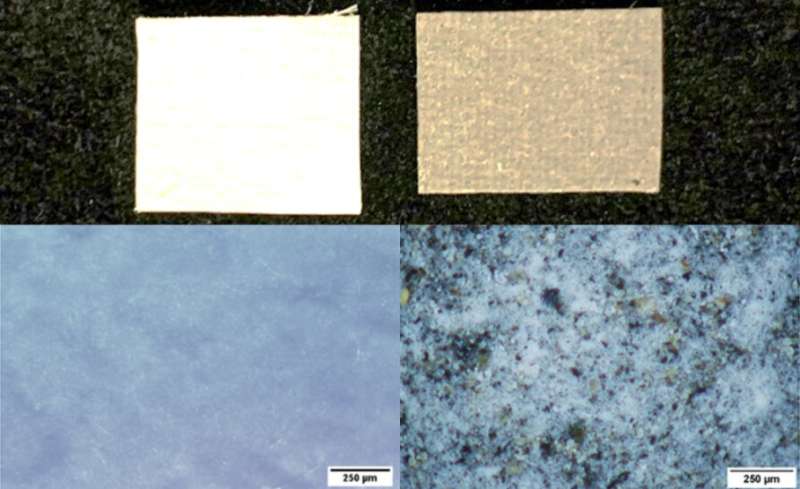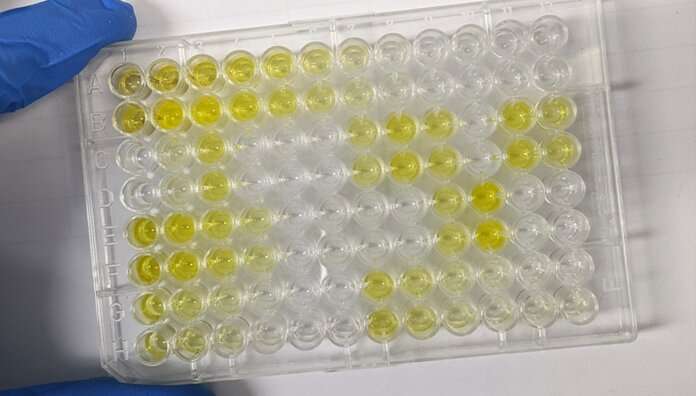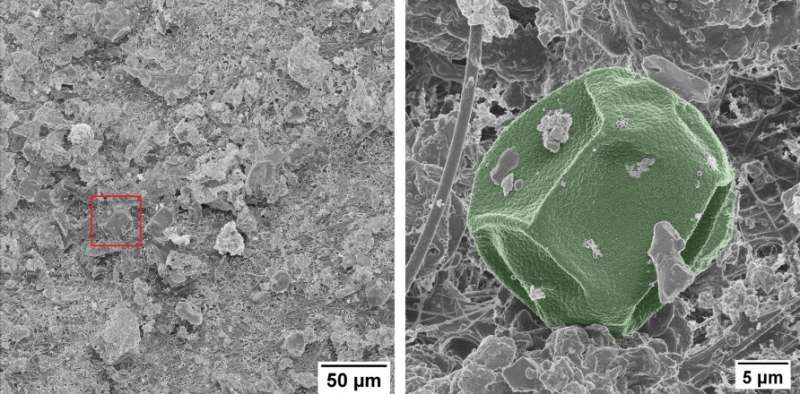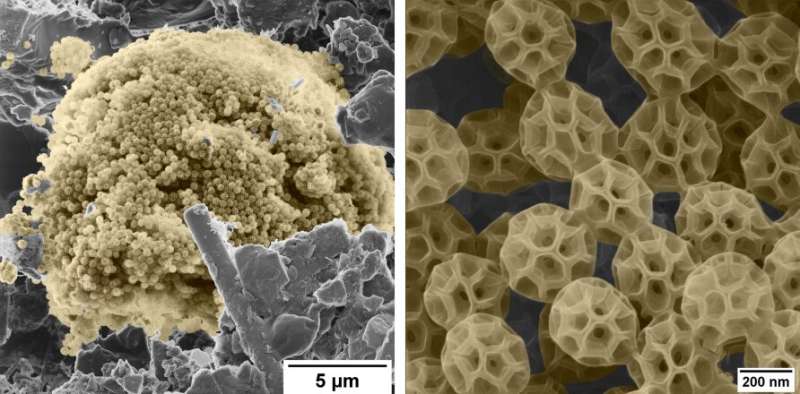This article has been reviewed according to Science X's editorial process and policies. Editors have highlighted the following attributes while ensuring the content's credibility:
fact-checked
trusted source
proofread
Exploring the air we breathe

Melbourne Pollen—a service at the University of Melbourne's School of BioSciences that forecasts the level of grass pollen and several other types of pollen in the air—has been looking at what's in Melbourne's air for more than 40 years. Mostly we are looking for pollen but, recently, we've taken a deep dive to see what else is there.
Why are we doing this?
One reason is curiosity, and the other is to improve our understanding of the link between pollen and allergies.
Although we count pollen, particularly grass pollen, people with hay fever and asthma aren't actually sensitive to the pollen itself, but to extremely small molecules called allergens that are part of the pollen grain. In someone with an allergy, these allergens stimulate certain types of immune cells in their body, and it's the molecules released by these activated cells that trigger symptoms of hay fever and asthma.
For the 2022 to 2023 pollen season, Melbourne Pollen has been working with the Department of Biochemistry and Pharmacology at the University of Melbourne, to see how much of a particular grass pollen allergen called the group V allergen (pronounced group five allergen) is in the air, and whether the amount of this allergen, per grass pollen grain, stays the same or changes over the season.
Our partnership includes the Materials Characterization and Fabrication Platform (MCFP), which is using its advanced equipment to identify what else is in our air.

Currently, we think of every grass pollen grain we see as highly allergenic. But maybe that's not right and the potency of grass pollen as a source of allergens like the group V allergen changes over the season.
The team in Biochemistry and Pharmacology use an antibody test called a "sandwich" ELISA to measure the group V allergen in our air. This technique allows us to process and measure lots of samples simultaneously, which means we'll soon be able to look at the amount of allergen present in the air every day during the season.
Knowing how much allergen is in the air during the peak allergy months will help us provide better information about when your hay fever symptoms might be bad and enable you to take action. To see what else is on the filters, we used a high-performance microscope at MCFP that uses a combination of intense lighting with very high-quality glass lenses to capture and focus light onto a digital camera.
A clean filter is almost featureless at this scale, but in a used filter we see lots of embedded particles of different shapes, colors and sizes.
While it is quite easy to identify pollen grains on the filter because they are relatively large, with a diameter of about 30 to 50 micrometers (0.03 to 0.05 millimeters), to see clearly smaller particles, we need to use a different approach because optical techniques, those that use visible light, are limited to a resolution of about one micron (that's one-thousandth of a millimeter).
For comparison, a human hair is between 10 and 50 micrometers thick.

To see things at higher magnifications we need to switch to a microscope that uses beams of charged particles to illuminate materials. Commonly these are electron beams or ion beams, and the instruments are called scanning electron microscopes (SEM) or helium ion microscopes (HIM).
At this higher magnification, we can see that the filter is a woven glass fiber mesh. On the surface is a mat of very fine polymer strands that help filter tiny particles.
While you cannot see through the filter, at this magnification the filter looks quite porous—as it must be for air but not for particles to pass through.
When we look at a filter that has been collecting material in Melbourne's air for a week, we unsurprisingly see a large amount of foreign matter. There are some large round particles that are immediately apparent.
These are those infamous pollen grains that Melbourne Pollen counts daily during hay fever season to provide our forecasts.
When we zoom in even further, we can see other much smaller particles that are around 300 nanometers in diameter (0.0003 millimeters). It is difficult to know what these oddly shaped spherical and highly sculpted particles are, but they could be brochosomes, which are microscopic granules secreted by leafhoppers to help keep their bodies clean.

We can also see lots of sharp-edged, angular-looking structures, as well as rods, fibers and shards. These are likely to be inorganic materials that have been picked up by the wind, like soil or sand from the ground or salts from ocean spray that has been carried inland from the coast.
And there are some tremendously small particles present as well. Some of these are only 10s of nanometers across (one-millionth of a millimeter), a thousand times smaller than your hair.
These will be some of the most challenging particles to identify since they are so very small. But they could be pollutants like smoke from car exhaust or perhaps even microplastics.
But to identify what these very small particles are made from and to understand where they may have come from, we need even more scientific instrumentation which will help us identify exactly what types of inorganic compounds might be being captured on the filter.
To do this we will use a combination of X-ray microanalysis and vibrational spectroscopy, which will identify materials by their chemical "fingerprint."
This interdisciplinary approach combines techniques that have never been used before to study allergens and the mysterious particles in the air we breathe. These are important steps towards further understanding how our environment affects our health.
Provided by University of Melbourne

















